Note: Please consult your physician or medical professional before attempting any of the exercises or vintage advice found below. This article is for informational purposes only.
Vintage Exercise
I’m so excited to share this article with you today! I’ve spent the last several years studying the exercise regimes performed by old Hollywood actresses and American housewives alike, and acquired a large collection of rare, mid-century books and magazines on the subject. As a child, I grew up in rigorous ballet training for many years. As a result, I’ve had a life-long fascination with exercise, movement, and stretching, and have practiced a wide range of exercise methods in adulthood. I am not a professional by any means, but I’ve had enough experience over the last 25 years to have a well-rounded perspective on the subject. So let’s get started!
Exercise terminology has changed a bit since the 1940s, so here are a few phrases I’ve translated into 21st century jargon:
“Setting Up” Exercise = Toning, Firming Exercises
“Reduce” = To lose weight, To diet for the purpose of losing weight
“Limber Up” = To Warm Up, Loosen Up
Vintage Exercise & Calorie Philosophy
To really start our journey back to the mid-century American home, we should first understand that people in the 40s and 50s saw exercise quite differently than we do today. Today it is assumed that the only way to keep from putting on weight is to workout on a regular basis. For many people I know, their daily trek to the gym to lift weights is as much a part of their day as eating breakfast! It is almost incomprehensible to some that one could not have a gym membership and yet be perfectly healthy and fit.
But wind the clock back seventy years, and you will find statements such as these popping out of beauty books and television shows:
“If you are overweight, you are overeating. Exercise alone will not make you lose, but it tightens and tones your muscles and can change proportions of your figure.” – Anita Colby’s Beauty Book (1952)
“Exercise is fine. It’s very important, but it’s not enough. It’s the calories that count.” The Donna Reed Show – Season 3, Episode 15 – “The Lean & Hungry Look”
This ideology could be harmful, of course, if overdone. I am not advocating the idea, but rather explaining the cultural norms so we can understand why their exercises were so much easier than ours today.
Active Lifestyles
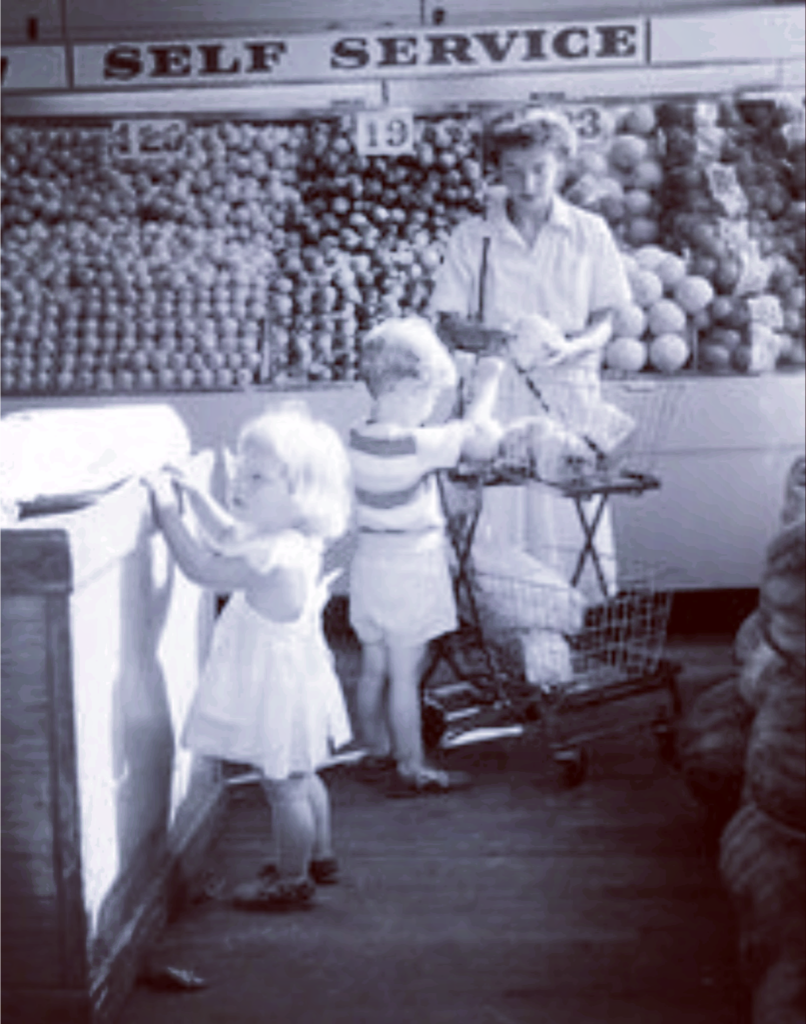
It goes without saying that folks in the 1940s and 50s were much more active than we are. Children may have walked to school, Mom walked to the local shops and markets on her errands, and kids walked to each other’s houses to play. If a family had a car, it was likely only one – and Dad almost certainly drove it to work.
“Mrs. 1950s Housewife” also burned a large number of calories doing her housework. In 1955, it was estimated that, “The average American woman takes about 15,000 steps every day just keeping house…” (Mrs. America Homemaker’s Guide). That comes out to a whopping 5.5 miles each day, just from housework!
Fresh Air, & Exercise as a Recreation
In addition, people were also much more used to fresh air than we are today. Kids couldn’t wait till it was spring so they could spend hours flying kites, playing ball, roller skating, jumping rope, and chasing each other outside. It was what they did for fun, prior to having video games and other modern distractions.
Women often hung their clothes to dry outside in the breeze as most families did not have an automatic dryer by 1950. And even though they had so many responsibilities, they were still encouraged in beauty books to take up a sport for fun – tennis, biking, etc. Being outside and walking to the market or dry cleaner’s would have been a welcome change from the daily routine of indoor housework, assuming the weather was pleasant. It was also much more common in the 1950s to “go dancing” as adults at a respectable formal dance, and teenagers frequently held dance parties in their living rooms. All the while they were burning calories.
Old Fashioned Exercise Routines
Since we’ve adequately looked at the active lifestyles of the efficient women from the 40s and 50s, we now come to the point of the exercise routines they performed. (Yes, most of them *did* do specific stretches and movements to “set up” or tone certain areas.) These exercises are not particularly difficult on their own. But if performed with proper muscle activation every day, they certainly would have made a difference over time. The stretches shown in the video below are not at all unlike ballet warmups today, though the girls who performed them had rather poor, “floppy” form.
Vintage Beauty Books
I have a number of publications which all show their own version of a remarkably similar workout routine for women. The pattern is as follows –
- Begin with stretches reaching up as high as you can, and then touching the ground.
- “Limber up” your whole body & you’re ready to begin with spot reducing exercises.
- Choose specific areas to target for your individual figure, depending on whether you want to add or “reduce” inches. The target areas include waist, hips, legs, knees, chest, and upper arms.
So let’s take a look at a sample workout from each publication!
~~~
“101 Hints for a Glamorous Figure ” (Wartime Abridged Edition of the Home Health Library, 1945)
“The time of day selected for your exercise is a matter that should be determined according to the hour at which you seem to secure the greatest pleasure and benefit from it…”
Joan Leslie’s Exericse Hints
Here is actress Joan Leslie (a favorite of mine for her role in the 1941 Sergeant York), demonstrating several stretches which are actually harder to perform than they appear at first glance.
“Anita Colby’s Beauty Book” -1952
Anita Colby was a famous model, author, and early television host who also had charge of Paramount Studio’s new talent in the 1940s. When young actresses would join the studio, it was Anita’s job to ensure that they were getting a healthy diet, customized beauty advice, and plenty of exercise. In 1952 she wrote this manual for the average American woman, sharing with them the techniques used by actresses to stay healthy and trim on set and off.
“If we could just learn and keep – KEEP EVERY MINUTE – correct posture, that would be the finest physical culturing we could do. So many of the best Hollywood actresses have only a few exercises to tone up muscles and distribute weight.” “Do [your exercises] every day – only 10 minutes for all of them, but be faithful about it.”
“Westmore Beauty Book” – 1956
“Start your exercise period as a ten-minute session. Work up to 30 minutes – no longer. When you are tired, stop and rest, then continue.”
The Debbie Drake Show
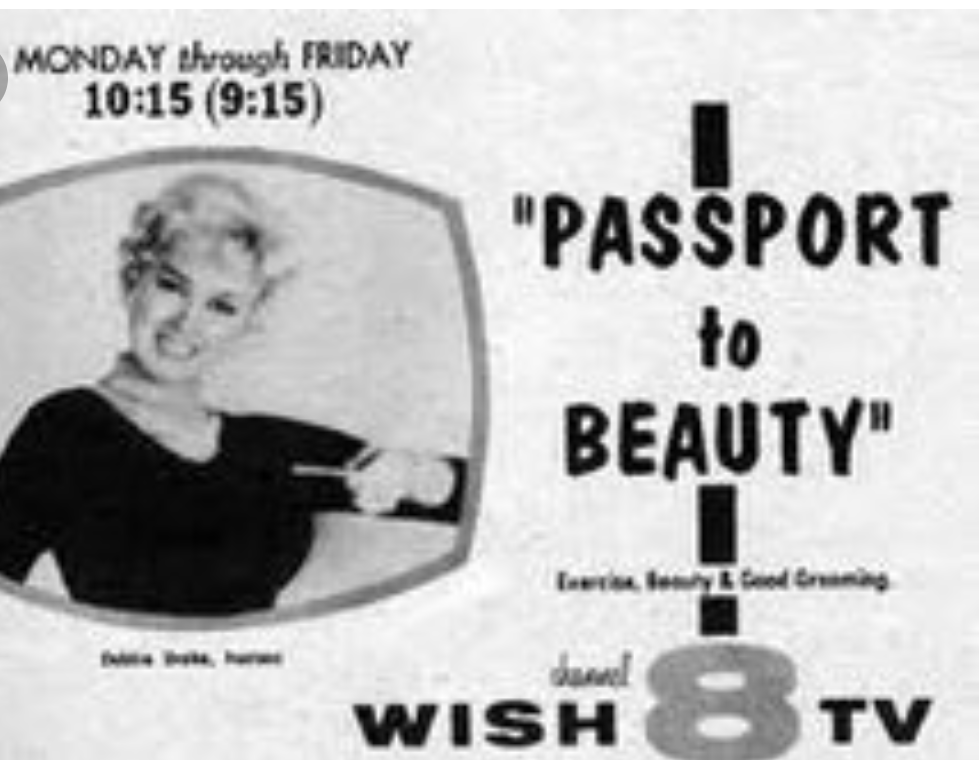
But if a woman grew weary of exercising on her own, there were a number of radio and television programs for just this reason! One such was the popular weekday “Debbie Drake Show“. Debbie’s exercises were most akin to Pilates by today’s standards, but if done properly they could definitely work your ab muscles and slim down the hips and legs over time. In addition to this show, she also created exercise records to be played on the record player. At first glance Miss Drake appeared to be a bit underweight to me, but she claimed to have eaten an average of 1,500 – 1,800 calories a day while appearing as a guest on the show “To Tell the Truth” in 1960. So she may have just had a naturally tall & lean figure. You can see a surviving video of her television exercise program here on Youtube.
Weights and Exercise Equipment
Of course, there were some alternate forms of exercise besides what we’ve discussed above. Women lifting weights was still a fairly new concept in the 40s and 50s, and most ladies would not have done so on a regular basis. They did occasionally use light dumbbells (4 lbs. each) to increase the effectiveness of a targeted stretch they were performing, but not with the goal of actually lifting a specific weight. (Below, from the Westmore Beauty Book.)
Other popular equipment of the day included rowing machines, stretching bands, ankle weights, and more. The Healthways Corporation was a large proponent of such paraphanelia, as was Jack LaLanne who was an early pioneer of the fitness movement. The Sears catalog sold home workout options as well.
Nothing New Under the Sun
There were, as in any decade, some slightly ridiculous contraptions and pills that promised to take inches off your figure. The “Slenderella” chain of salons claimed you could lose inches by simply relaxing on their electronic rotating beds, while Aids sold “vitamins” to speed up the reducing process. In recent years, the internet has had a grand time mocking some surviving machines that were supposed to slim you down by using a moving belt to “melt” away fat. Treadmill-like in appearance, they probably did little except perhaps improve circulation. No time period seems to be without these silly marketing concepts, and we certainly have far too many of our own “miracle” pills, weight loss shakes, and questionable supplements on the market today to look back on the 1950s and say we’ve outgrown the propensity to fall for anything that might help us “reduce”! 😉
~~~
But I sometimes wonder, when I’m driving by a gym full of stressed and tired people, if we could learn something from our grandparent’s generation when it comes to common sense, good food, and exercise… If maybe by slowing down, eating well-planned nutritious meals, and being fonder of fresh air and the great outdoors, we might find that our bodies were just waiting for us to stop pushing them to the limit. If riding your bike for the sheer fun of it on a sunny Saturday afternoon wouldn’t do more good for body and soul than straining through that sweaty indoor spin class complete with blaring music and chanting instructors. Humanity existed for thousands of years with such philosophies – active lifestyle, healthy food, and moderate exercise. While our modern age has given us more fitness expectations than ever, the corresponding stressful & unhealthy lifestyles have led to worse health than we’ve had in decades.
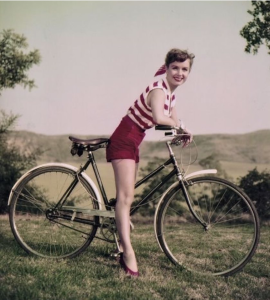
I hope you’ve enjoyed this jaunt into the days of vintage workouts, and I hope you’ll join me next week as I share some vintage articles specifically about 1950s post-partum exercise!
Till next time,
Katrina Holte

Some of the links on this page are affiliate links.


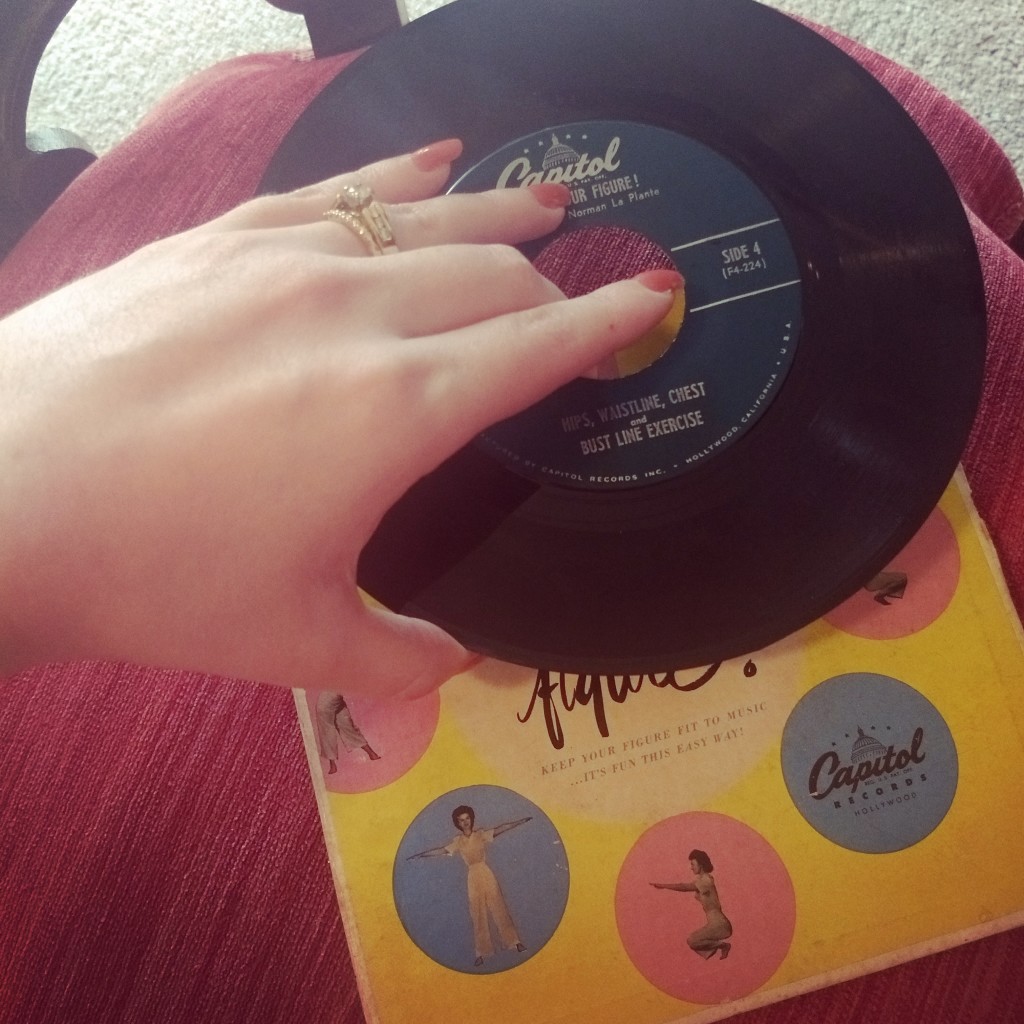
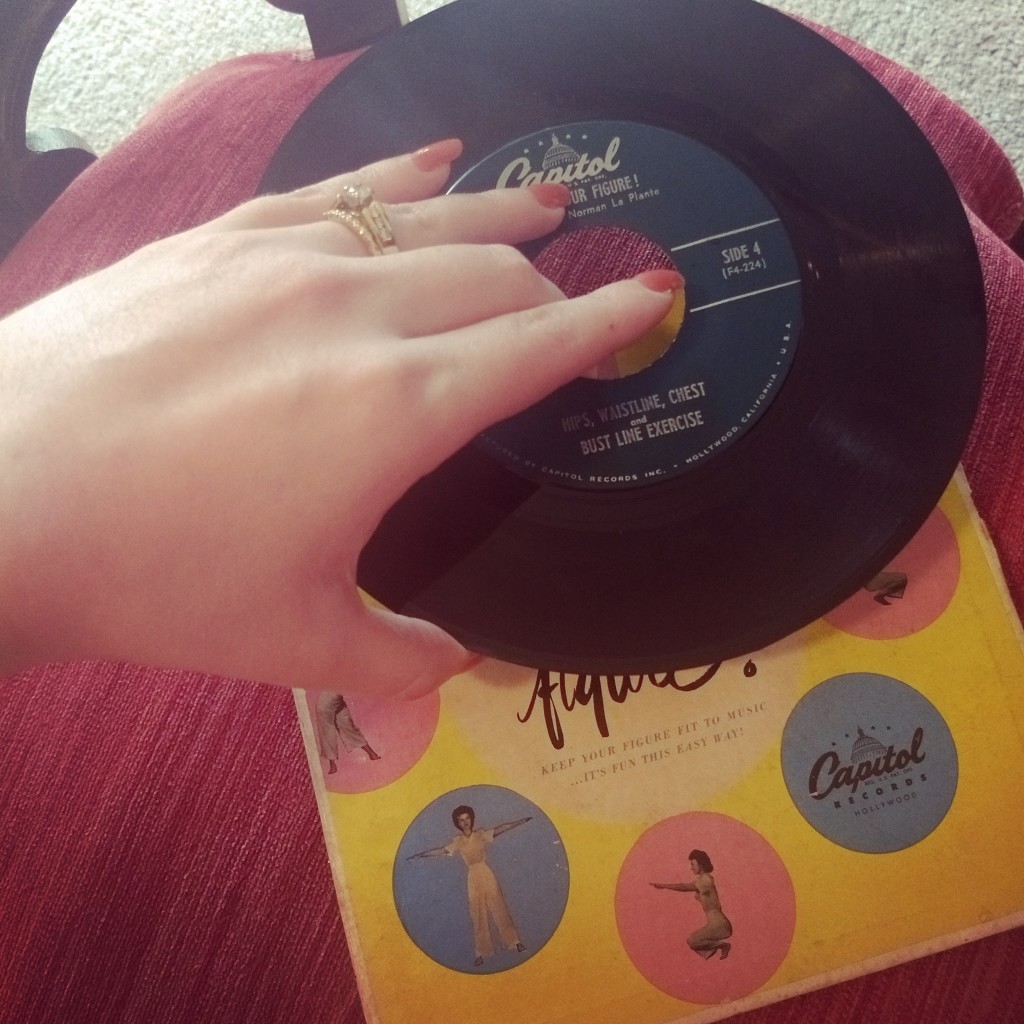
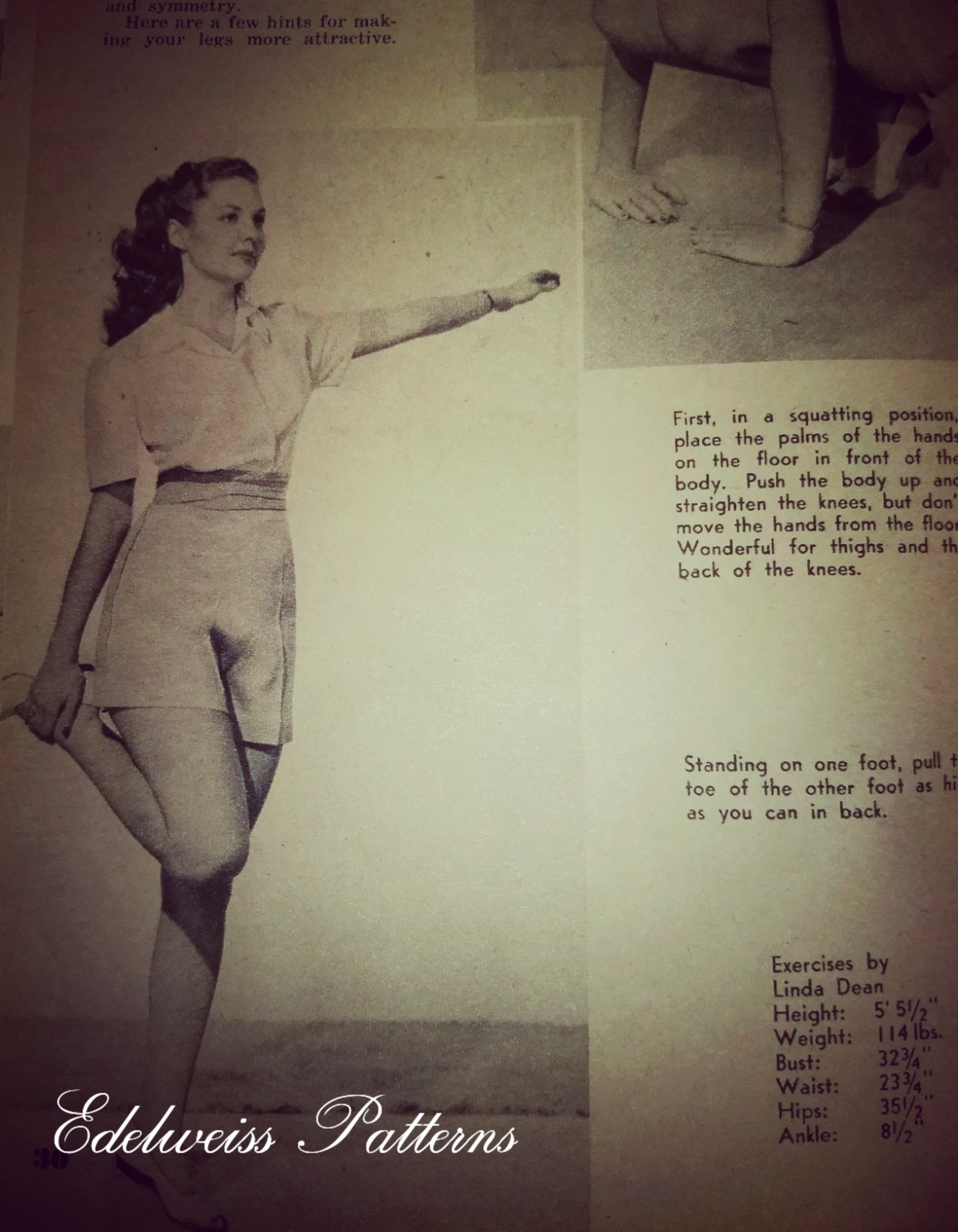
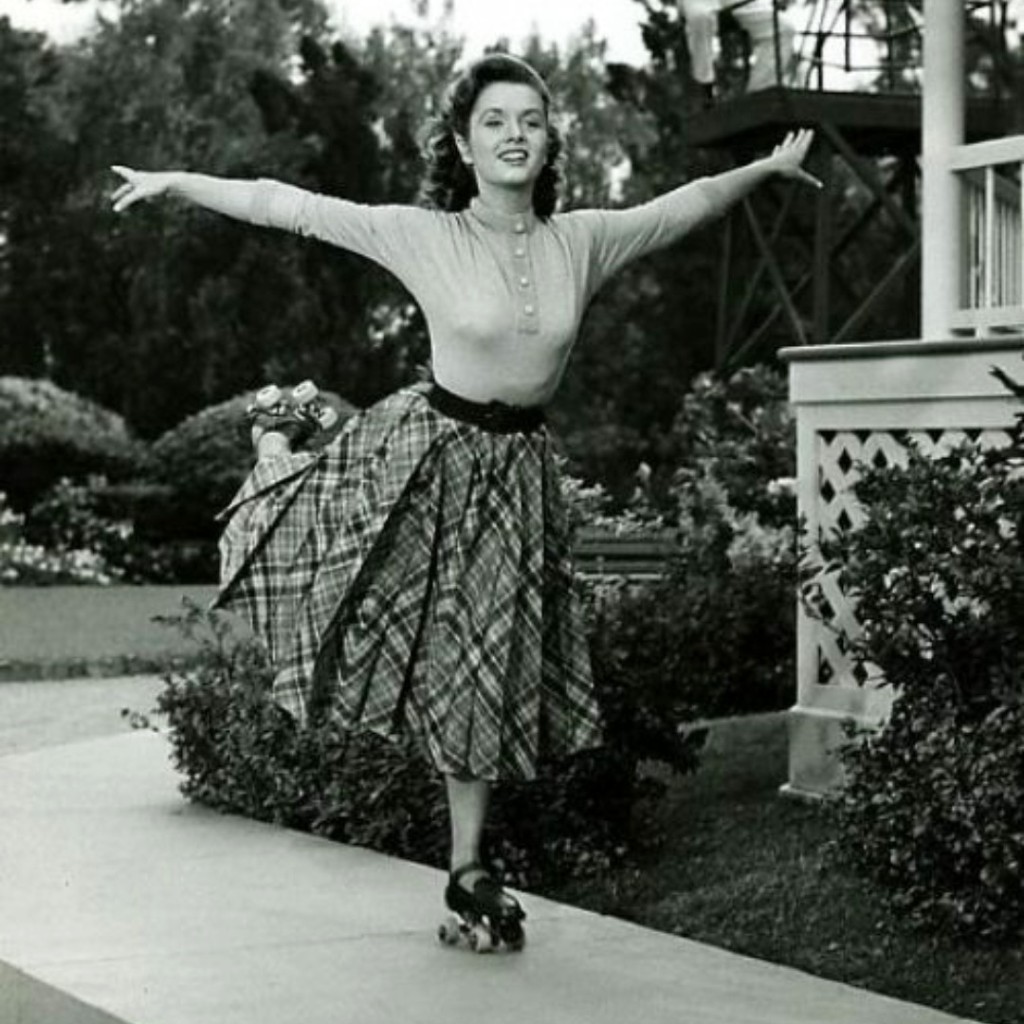
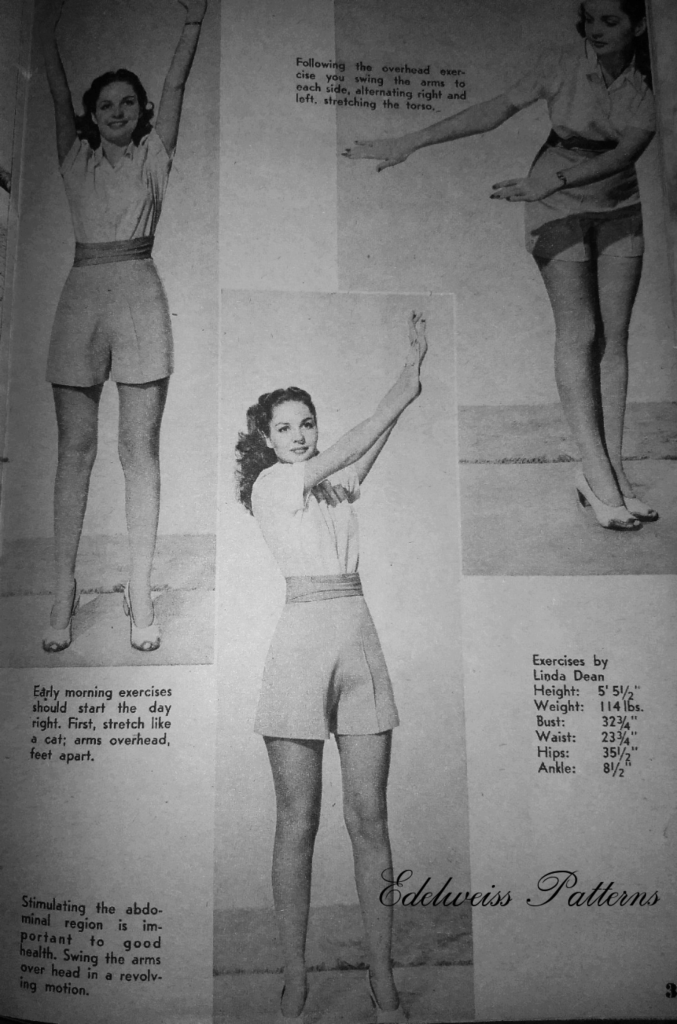
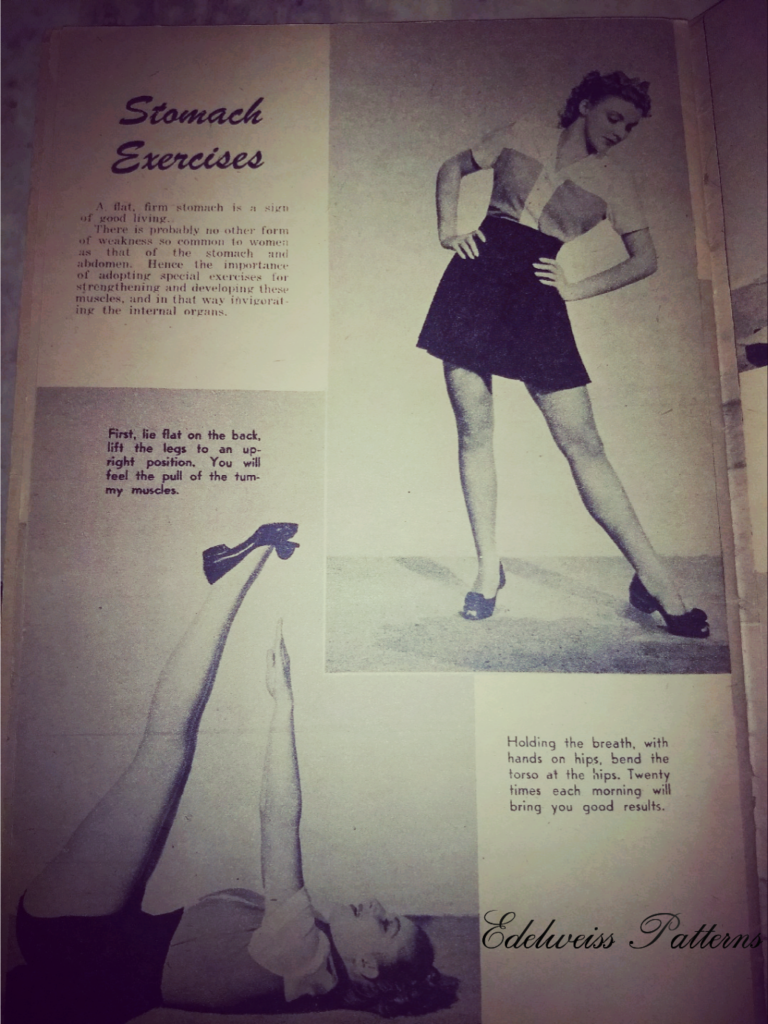
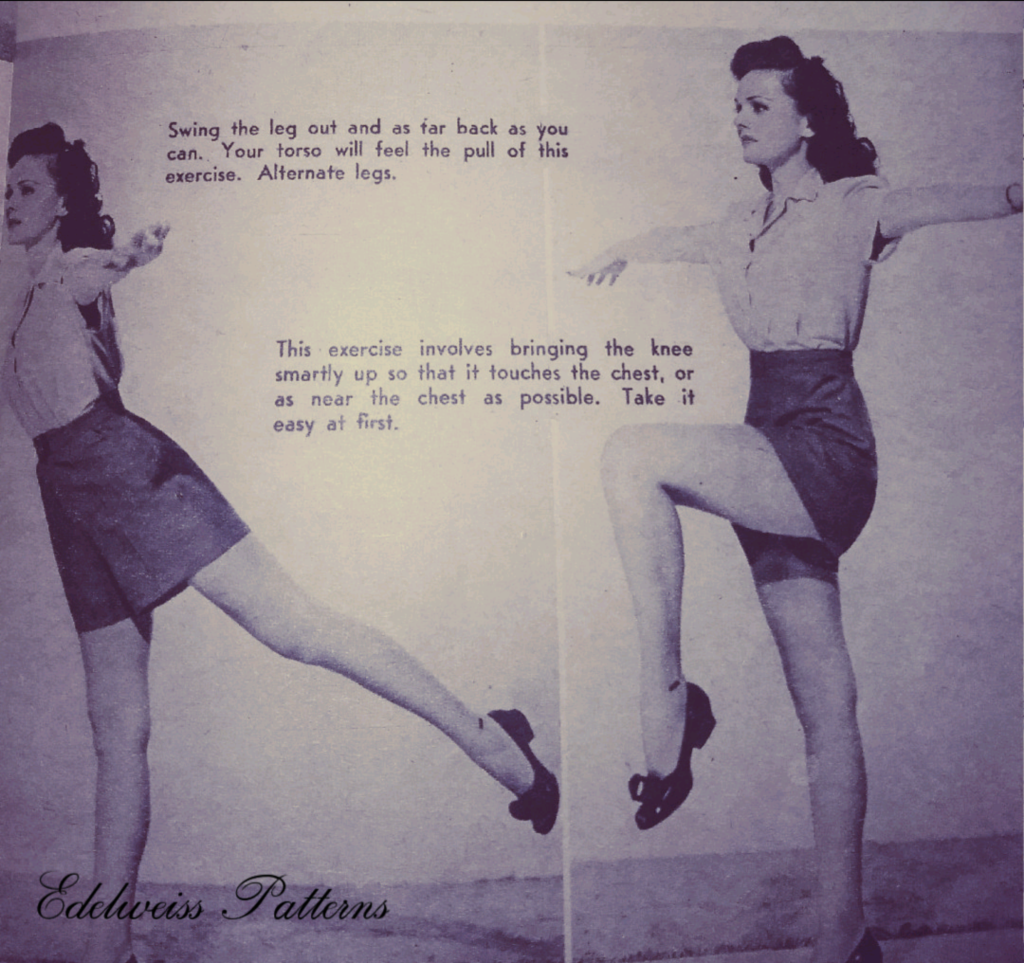
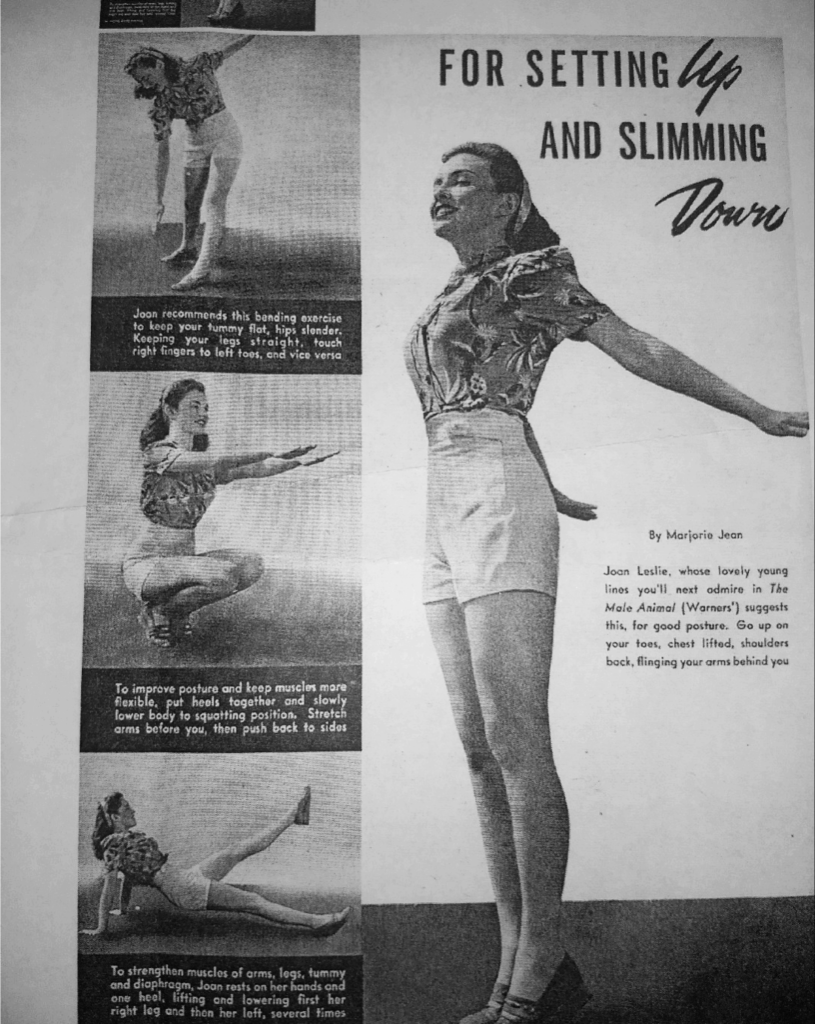
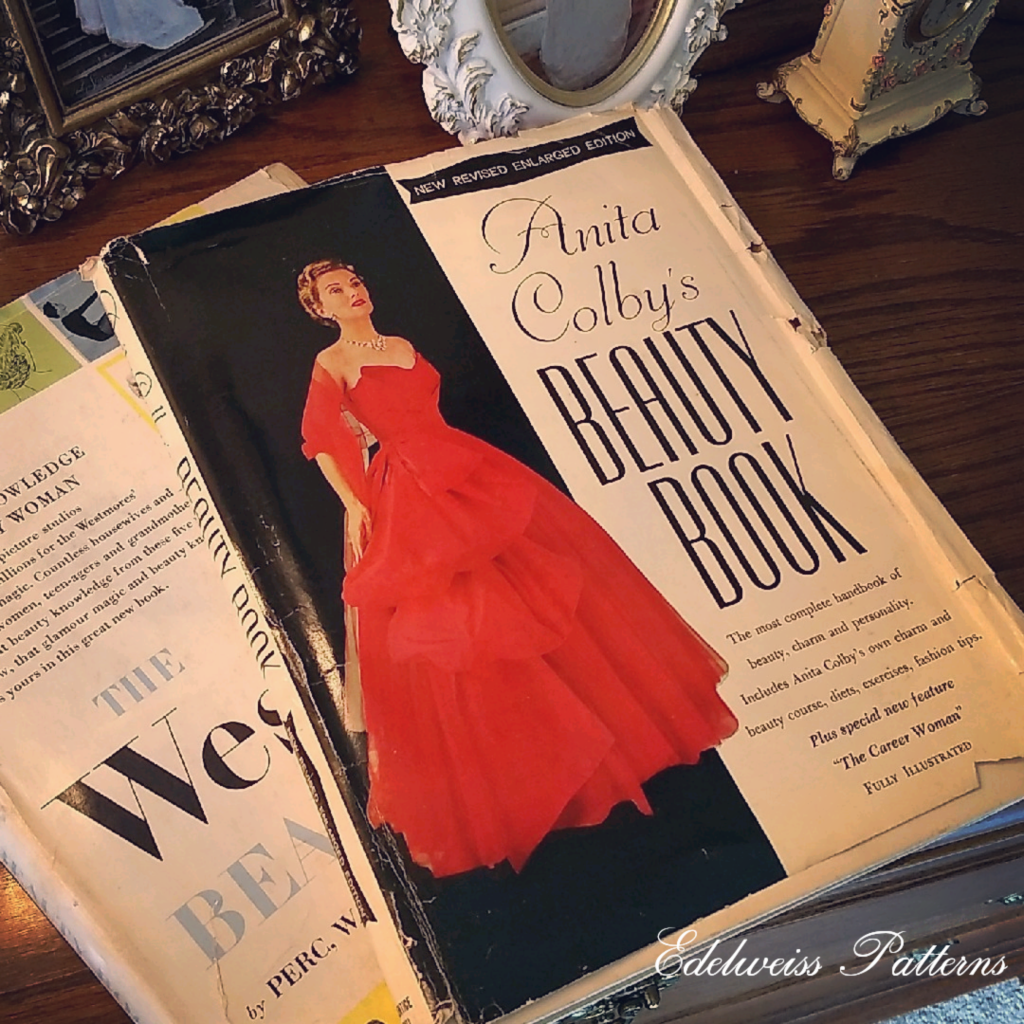
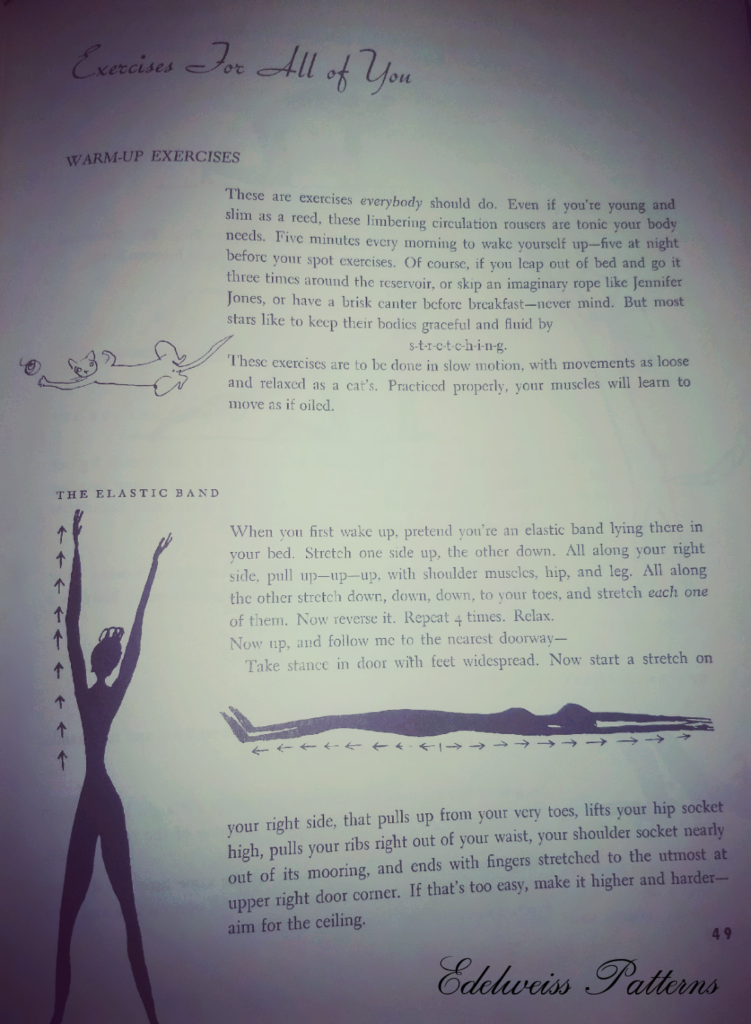
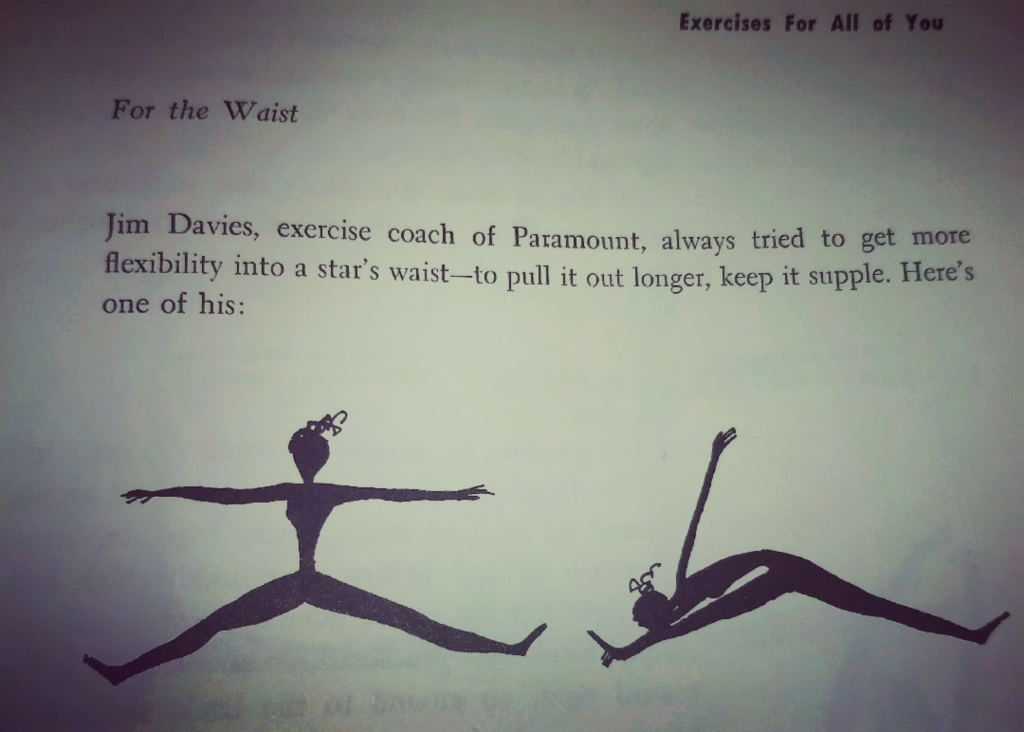
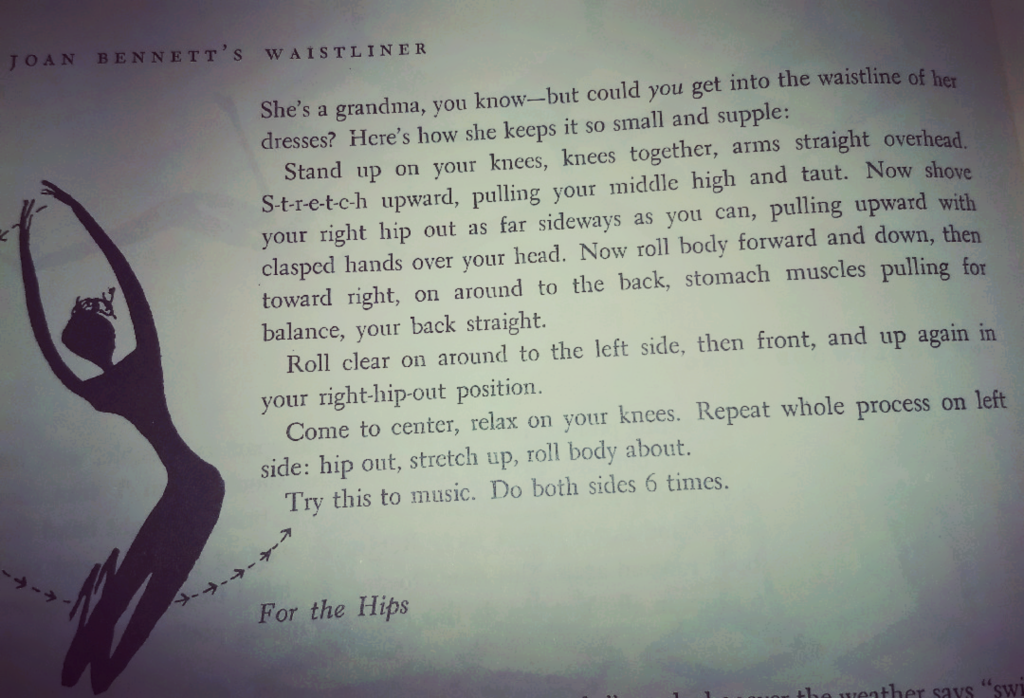
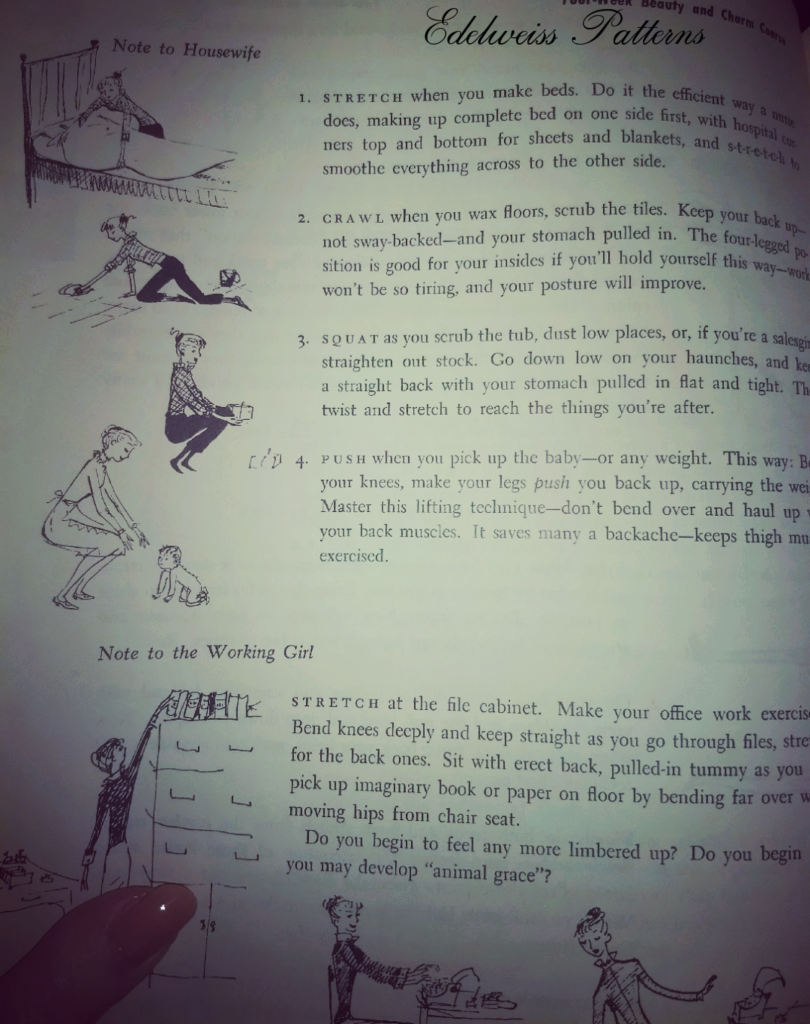
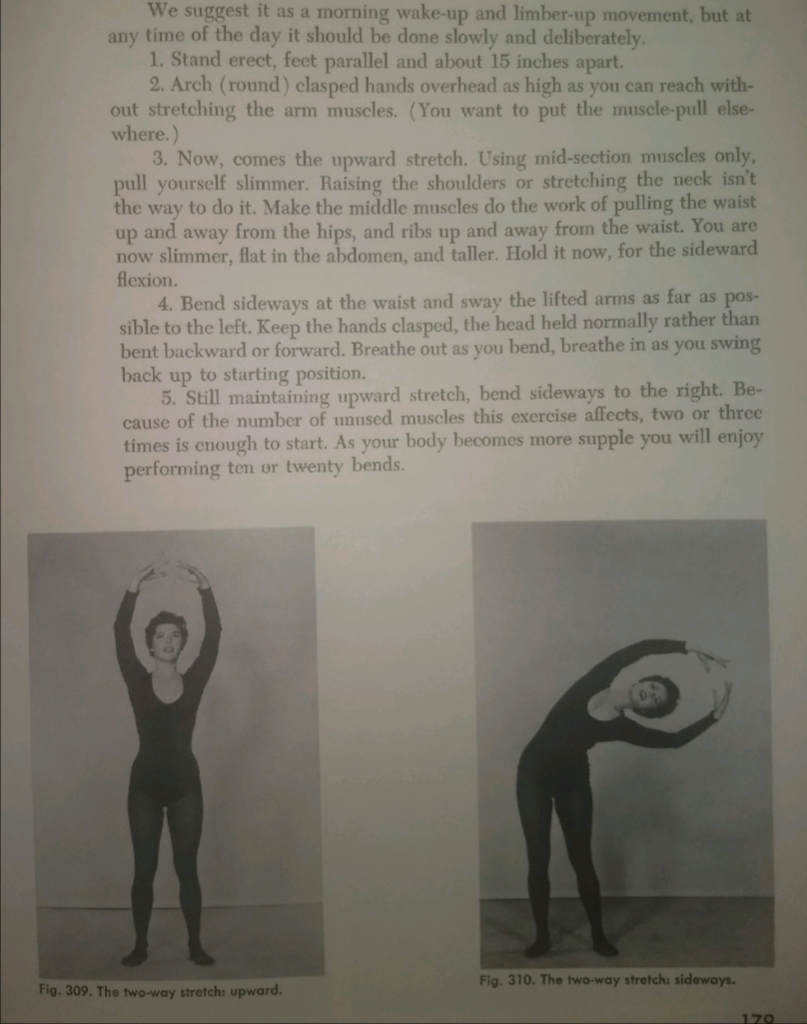
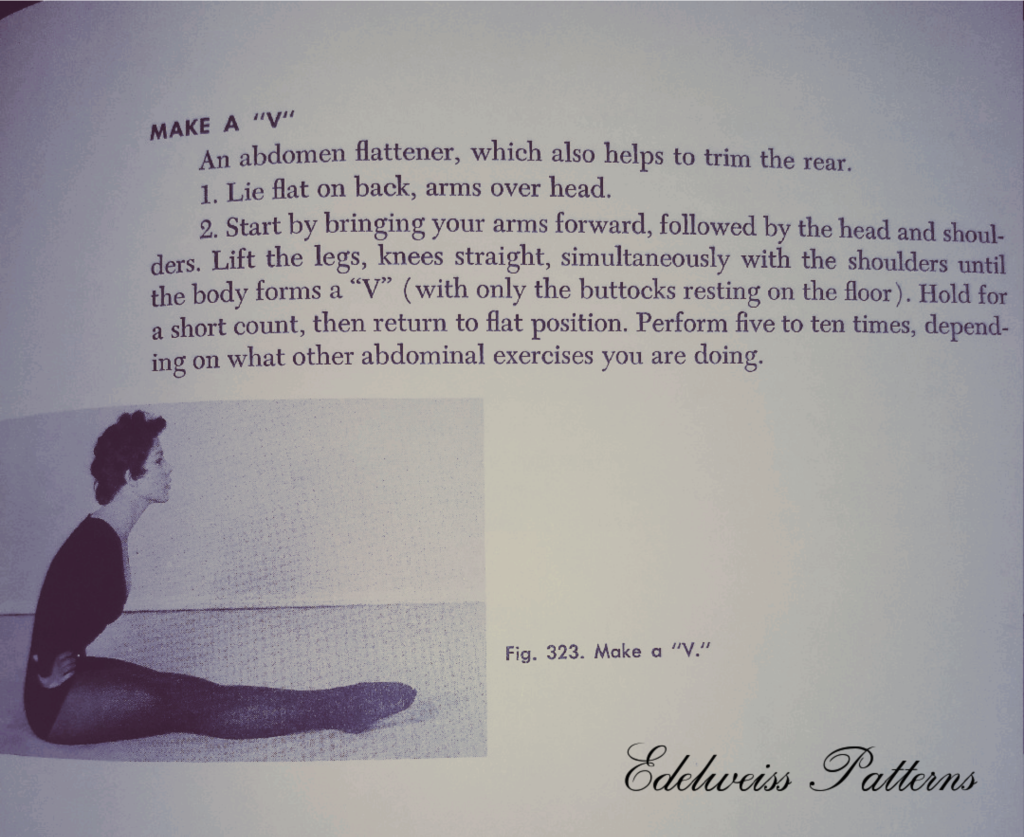
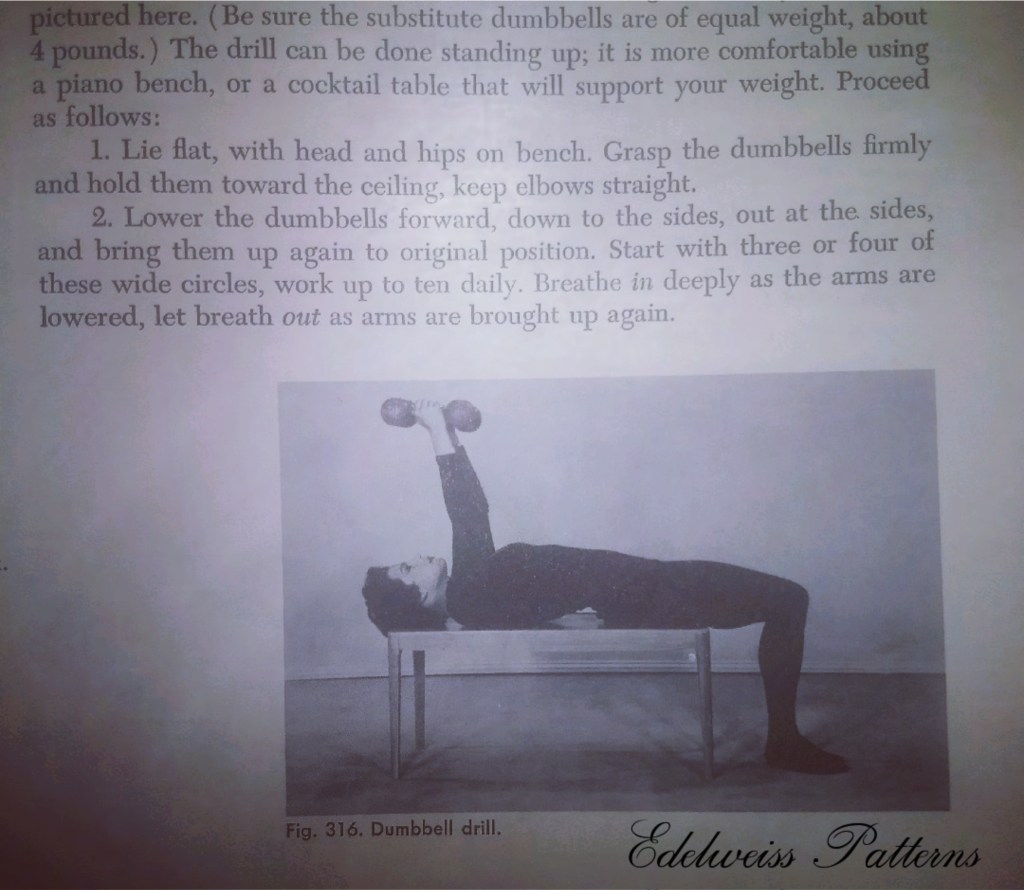


Thank you. I wish every out of shape child had a yard with trees, a friendly dog, and a sibling to play badminton in the backyard. Cheaper than a gym, and so much healthier and a stress buster for kids.
We need smaller houses with bigger yards, houses with porches so parents can relax and watch their kids burn off dinner before bedtime.
Personally, I wish local couples-already dances were back in vogue — much better than squatting side by side just watching tv!
Sandi, I love the way you put that – “Smaller houses and bigger yards”… I’ve read that the average house in the 1950s was 1,000 square feet smaller than the average house of today. We really have just gotten too comfortable indoors!
I’m a fan of life as exercise, I’ve never had a ‘real’ exercise routine. I just live life! I love going on walks, chasing small children (formerly my siblings, now my boy!) around, swimming and dancing in the living room with my husband. Looking forward to the article on post partum exercise! I’m almost 6 months post partum and I have about 13 lbs and 5 inches to lose. I’m a housewife, cook 3 meals a day, get outside as much as I can and carry a 16 lb baby more of the day than not. I’m really interested in hearing how past generations got back into shape, I sure don’t have time to exercise!
Wifey, that sounds like fun – dancing in the living room and swimming and all that! I think that women who have just birthed a child are amazing, and the most important thing they can do is to be kind to their bodies! It sounds like you’re doing a terrific job, and I look forward to sharing the post-partum article in the next day or two! Thank you for commenting!
All the best,
Katrina Holte
Katrina,
This is an interesting look at fitness in the 1940’s and 1950’s, thank you for sharing! I enjoy hanging my laundry outside and doing housework. Cleaning house really can be a workout. : ) Over the past few years I have enjoyed using a weighted hula hoop for extra exercise. While hooping I do arm exercises and listen to music. It is really a fun way to stay in shape, and after having a baby it helped me loose all of the extra weight I had gained.
Sarah
Hello, Sarah,
Ah yes – hula hoops! Another mid-century fitness trend which has never entirely gone out of vogue! That is so wonderful that you squeeze fitness into your day in a way that you find enjoyment from. I do vintage workouts for that reason – they’re just so much more fun than hearing a yelling instructor in a gym! 😉 And no joke, housework is a serious calorie burner! After an hour or two of cleaning, I feel like I’ve just taken a long bike ride.
Thanks for commenting!
All the best,
Katrina Holte
Very interesting article! Thanks for sharing some of your research on exercise in the past. I’m looking forward to reading your upcoming follow up. I’d also be interested to hear your own exercise routine, such as do you have a certain day to walk, one to do gentle stretches, etc. or do you just decide as you go along? My doctor has ordered me to do 150 minutes a week of activity, which can be as simple as walking, but I have trouble getting that much in and have to work to plan it out (and still don’t get it all in some weeks!)
Hello, Rose,
Thank you for the comment! Of course I would never give anyone advice on the subject, but I can tell you what works for me during an average week. I do a few minutes of stretching every morning when I wake up (right before I drink a glass of water and my mug of tea.) Usually I take nice long walks outside several days a week when the weather is not too cold, and do more focused vintage exercise 3 days a week in the afternoons. If I had a long day, I do a floor leg workout before I go to sleep. And usually every other weekend I take a long bike ride with my husband. Naturally, I have a retro pink bicycle! 😉
Every body is different and it’s really just a matter of trial and error to find what works best for your lifestyle. But in general, I think the more enjoyment you can have from exercise, the better!
All the best,
Katrina Holte
[…] promised in last week’s retro workout article, I’m sharing some rare vintage exercise publications with a unique twist – […]
This is a wonderful article with so many helpful details. Last year I lost 25+ pounds using a method that basically combines careful, delicate portion sizes with exercises not unlike these. All of the exercises are done at home, with no real equipment (although I do like to use resistance bands or light weights from time to time). I have *never* looked or felt better. Within a few weeks of starting the exercises, my lifelong back pain from severe scoliosis was gone. I thought it was with me forever! (And I used to work out at the gym all the time–it was the *NATURE* of the exercise that healed my back pain, not the fact that I was starting to exercise after being sedentary!) I was floored, and since then have committed to exercising regularly. I love to take walks, which I can do in any clothing, and I try to do my exercises for 10-30 minutes most days, if I can fit it into my schedule. I also like to spend 5 minutes jumping rope or jumping on my mini-trampoline from time to time, just to squeeze in a little more. This is all free, requires no gym membership, and can involve my children. It’s so sane and reasonable. I love seeing how similarly sane and reasonable the vintage approach is: that is, eat more delicately and spend a bit of time each day on exercises that tone.
Love this! Thank you for sharing your research.
[…] could be performed at an incline to speed up the “reducing” process. (Read my article here for terminology of vintage exercise – “reducing” meant slimming down or losing […]
[…] have walked to the market to pick up fresh produce, and almost certainly did 15 minutes of gentle at-home exercises (more on that later!) If she had children, it is unlikely she drove them to school as most families […]
[…] have two in-depth articles on the subject with photographs and illustrations from my collection! This article covers everything you’d want to know about 1940s & 50s exericse, while this one looks at […]
So happy I found this. I used to have your vintage exercise videos on YouTube favorited but I can’t find them anymore! These exercises are a lot easier on my hyper mobility. Thank you for all the hard work you do to find and put together all this information!
Glad you enjoy it, B!